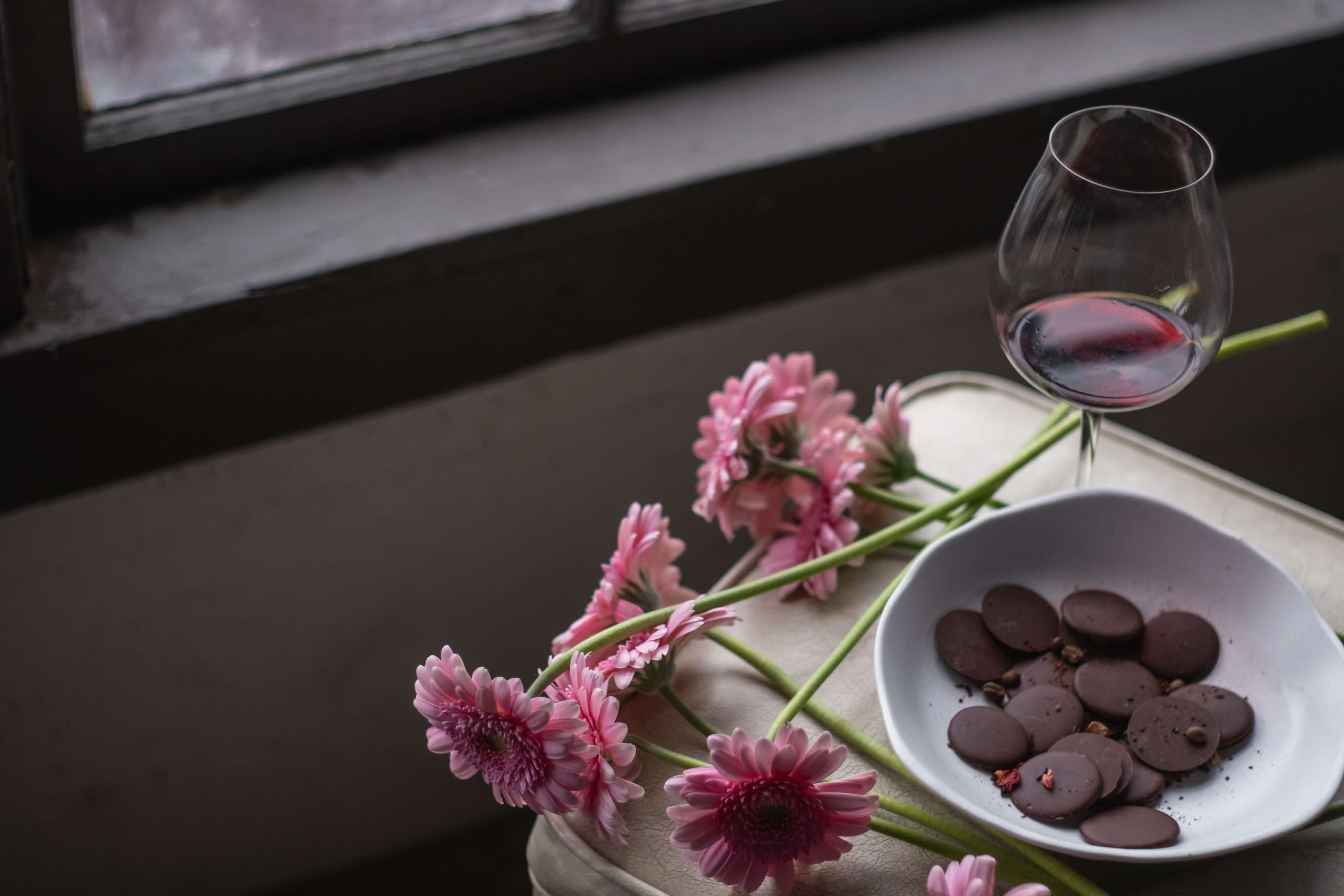Wine and chocolate are two of life’s great indulgences, yet pairing them correctly is more challenging than you might think. Rich, velvety chocolate melting on your tongue alongside a sip of fine wine can be a luxurious tasting experience. To achieve this, there is quite a bit of thought that goes into this deceivingly tricky pairing. Surprisingly, the flavors and structures of these two delicacies often clash rather than complement each other. Understanding why this happens, as well as how to navigate these challenges, can ensure your tasting experience is exceptional (and helps you craft pairings that truly enhance both the wine and the chocolate rather than overpowering one another).
The Terroir Connection
Both wine and chocolate are profoundly influenced by the environment in which they are grown, a concept known as “terroir.” Just as wine’s flavors are shaped by soil composition, climate, and altitude, cacao beans also exhibit distinct characteristics based on their geographic origin.
For example, Pinot Noir grapes grown in Oregon, USA tend to present a more fruit-focused tasting profile with a rich hue compared to Pinot Noir grapes grown in Burgundy, France, which will create wine that is lighter in color and presents more earthy notes. These tasting profiles are markedly different due to variations in temperature, sunlight, and soil conditions. Similarly, cacao grown in Madagascar tends to be bright and fruity due to high levels of natural acidity within the beans, while cacao from Ecuador often carries deep, earthy undertones thanks to low levels of both acid and fat (i.e., cocoa butter).
Environmental factors contribute to the depth and complexity of both wine and chocolate, which also makes pairing them more intricate. Each combination introduces a new set of variables to consider.
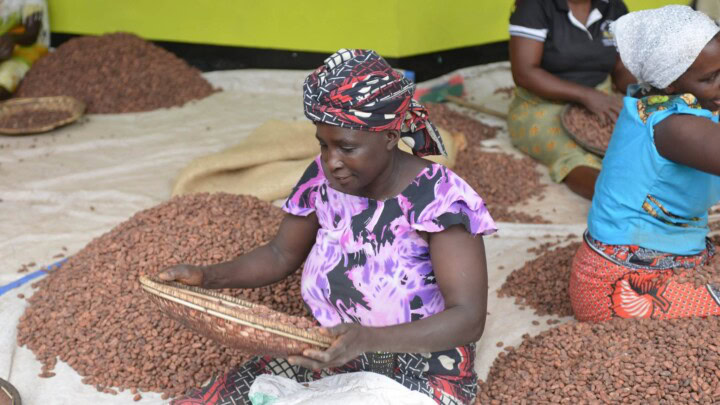
Similarities in Production and Tasting Profiles
The parallels between wine and chocolate extend beyond terroir. Their production processes and tasting methodologies are strikingly similar, too.
Fermentation: Both grapes and cacao beans undergo fermentation. This is a crucial step that develops their flavor complexity. Winemakers ferment grape juice into alcohol, while cacao beans undergo a fermentation process that enhances their depth of flavor and reduces bitterness.
Tasting Methods: Wine and chocolate follow a similar sensory approach. Tasting experts assess aroma, flavor, texture, and finish in both products before extending the evaluation to identify other characteristics. Wine connoisseurs note acidity, tannins, and body, of which the two former are also present in chocolate. Chocolate aficionados evaluate sweetness (also detectable in wine), bitterness (a cousin to the impact made by tannins in wine), mouthfeel (a component of assessing whether a wine is light or full bodied), and lingering flavors (referred to as “finish” when assessing wine).
These shared characteristics should make pairing wine and chocolate a natural endeavor, yet their unique properties often create unexpected challenges.
Why Pairing Wine and Chocolate Is Surprisingly Difficult
One of the biggest obstacles in pairing wine and chocolate is the tannin factor. Tannins are naturally occurring compounds found in grape skins, seeds, stems, and oak barrels. They give red wines their characteristic dryness or tightness felt on the tongue, cheeks, gums, or the roof of the mouth. This temporary sensation can be described as similar to an emery board when filing one’s names.
When paired with food high in fat, tannins are a very welcome characteristic. A simple explanation is that the dryness experienced in the mouth after a sip of wine helps combat the fat left in the mouth from a bite of indulgent, high fat food. This is one of the reasons why beef and Cabernet Sauvignon, a high tannin wine, are such a classic pairing.
Chocolate, particularly dark varieties, also contains tannins. When combined, excessive tannins can overwhelm the palate, creating an astringent, chalk-like sensation rather than a smooth, balanced tasting experience.
Another challenge is acidity. Many wines, especially whites and lighter reds, have high acidity levels that can clash with the creamy, rich texture of chocolate. On the other hand, intensely sweet wines, such as ice or dessert wines, can make chocolate taste dull or sour. The key is finding a balance where neither the wine nor the chocolate overpowers the other.
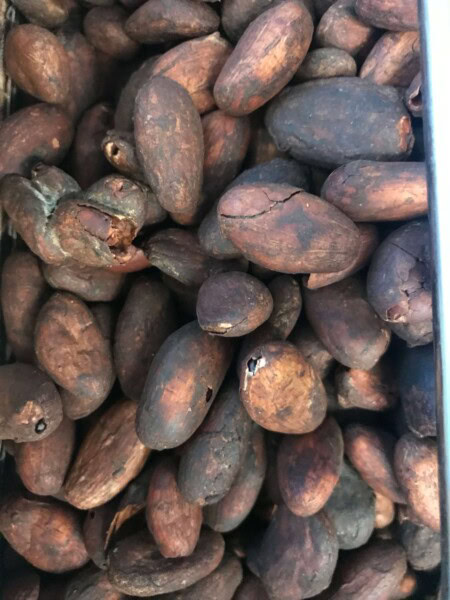
How to Successfully Pair Wine and Chocolate
Though pairing wine and chocolate can be tricky, strategic choices can create beautiful combinations.
1. Match Sweetness Levels: As with all wine and food pairings, the wine should always be at least as sweet, if not sweeter, than the food. A dry red wine with a sugar-rich milk chocolate will often taste bitter or “off,” whereas a dessert wine, like a Port or sweet Riesling, will complement the milk chocolate’s sweetness very well.
2. Consider Intensity: Another classic wine and food pairing trick is to mirror intensities. Lighter chocolates pair well with lighter wines, while darker, more intense chocolates require bolder, more structured wines. Try pairing a white chocolate, which is creamy and sweet, pairs wonderfully with Moscato d’Asti or a buttery, oak-aged Chardonnay. A strong match for a 70% dark chocolate might be a robust Zinfandel or Port.
3. Balance Tannins: Since both wine and chocolate contain tannins, choosing a wine with softer tannins can create a smoother experience. For example, a Merlot, which has lower tannins than a Cabernet Sauvignon, is a better option when pairing with dark chocolate.
4. Look for Complementary Flavor Notes: For those with the keenest palates, pay attention to the flavor notes in both wine and chocolate. A fruity red wine like a Grenache/Garnacha pairs well with dark chocolate-covered berries, while a nutty, caramel-like Sherry enhances the flavors of a milk chocolate stuffed with rich pieces of toffee.
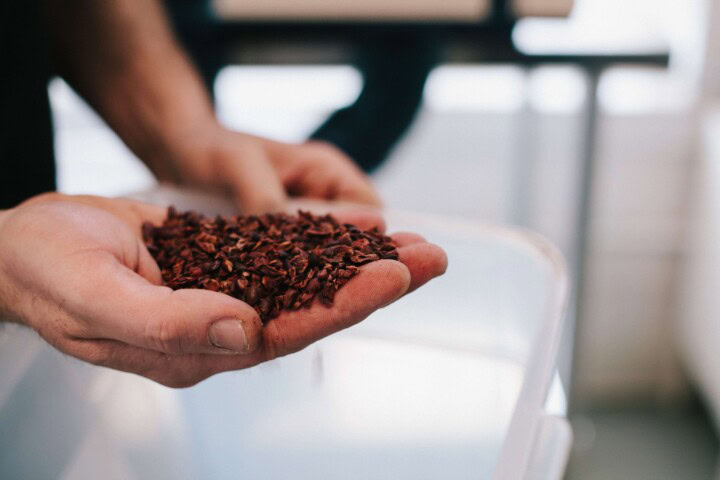
Winning Wine and Chocolate Pairings
To put these principles into action, test out a few tried-and-true wine and chocolate pairings that create a balanced and delightful tasting experience:
- White Chocolate + sweet Riesling or Moscato: The delicate and sweet white chocolate pairs well with the sweet, floral characteristics of these wines.
- Milk Chocolate + Pinot Noir: The red fruit flavors in Pinot Noir enhance the creamy nature of milk chocolate. Navigate the cellars at your local wine shop for an Oregon Pinot Noir for an emphasis on red fruit characteristics.
- Dark Chocolate (50-60% cacao) + Zinfandel or Syrah/Shiraz: The fruit-forward, slightly spicy nature of Zinfandel or Syrah/Shiraz counterbalances the bitterness of moderately dark chocolate. Go one step further and try the chocolate with both of these wines to find your personal preference. An excellent third option would be a Petite Sirah (it’s an entirely different grape). Make it a wine and chocolate pairing flight!
- Dark Chocolate (70%+ cacao) + Amarone: The dried fruit and earthy notes of this wine matches the deep, complex bitterness of high-percentage dark chocolate.
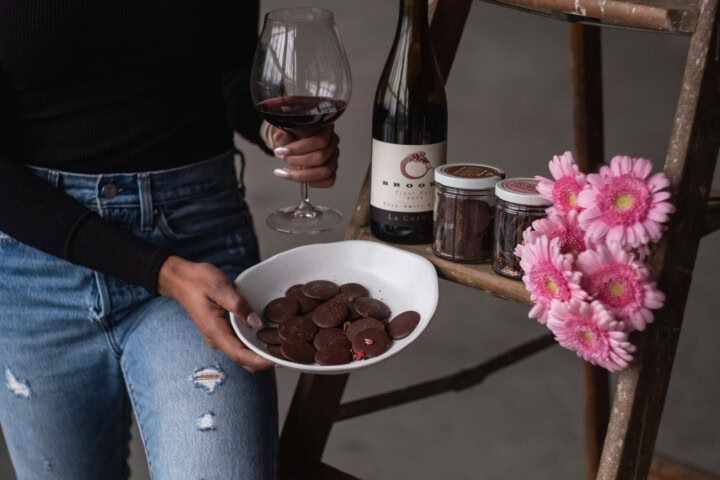
Elevating Your (At Home) Tasting Experience
For those looking to explore wine and chocolate pairings, a self-guided tasting experience can be both educational and indulgent.
- Build a flight of wines to pair with a flight of chocolates. For a truly unique experience, pick a single grape variety and pair a flight of single vineyard wines with a line up of single origin chocolate.
- Start with small bites of the first chocolate and thoroughly chew. Allow your body heat to thoroughly melt the chocolate in your mouth. Savor the flavors and textures.
- Sip the first wine. Give considerable attention first to any sensations that change in your mouth with that sip. After you swallow, then reflect on the lingering flavors that evolve over the next 30 seconds. Do you taste more of the wine or more of the chocolate? The goal is to have equal influences from each. Are the lasting flavors pleasant?
- Take another small bite of the first chocolate and repeat the process with the second wine. Compare the balance (or lack of balance) between the chocolate and this new wine. Is anything muted? Elevated? Different lingering flavors? Are they pleasant? More so or less so than with the first wine?
- Repeat through your flight. And then repeat through different styles of chocolate. Experiment with different pairings, take notes, and most importantly, trust your own palate. Wine and food (and chocolate) pairing is subjective to each taster’s preferences. What might be an ideal pairing for you may be different than what your tasting partner finds agreeable.
While wine and chocolate pairing is often seen as a natural combination, the complexity of their flavors and structures can make it surprisingly difficult. With careful selection and an understanding of how their characteristics interact, these two luxurious treats can create a truly extraordinary tasting experience. Cheers!
